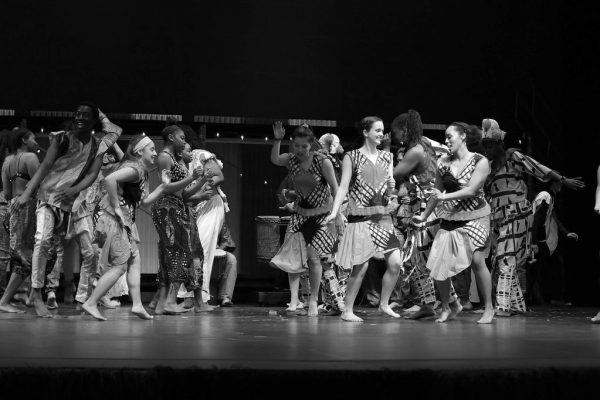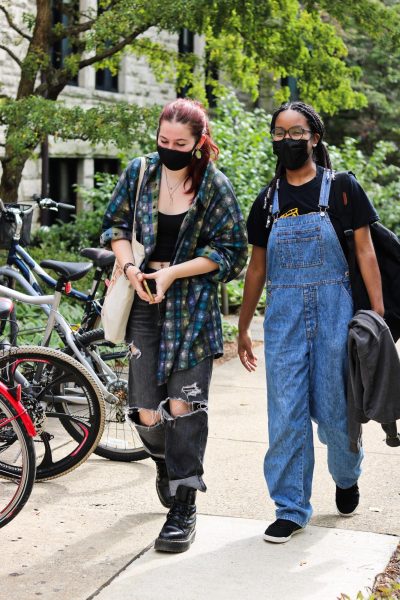Lack of Gun Control Puts U.S. Education System at Risk
In the more than five years since the December 2012 mass shooting at Sandy Hook Elementary School in Newtown, CT, it has become clear that gun control in the United States will not be achieved through the avenues that we have already explored. Congress has proven that it has no interest in challenging the National Rifle Association, even at the expense of students’ lives.
Students are now taking matters into their own hands — and not just the survivors of the horrific Parkland shooting, but countless others around the country as well. Mass school walkouts in support of gun control are being organized in one of the most compelling and powerful instances of student-led action in my lifetime.
Now, schools must choose how to respond to these walkouts. For many, I hope it will be an easy decision — schools are, at their roots, valuable places for young people to become conscious and engaged citizens. I truly believe that many teachers and administrators understand this and will support students in making their voices heard. Others, however, have already stated publicly that students participating in these walkouts will face disciplinary consequences, including suspension — a punishment with potentially serious ramifications, particularly for students planning on applying for college.
Fortunately, many colleges and universities have already stated their support of these walkouts and made clear that applicants to their institutions will not be penalized for such suspensions. Oberlin is among those, as the Admissions Office made a statement last week affirming its support of social justice and “respectful engagement.” (I think there is a conversation to be had about the use of the word “respectful” in this context, but that is for a different time.)
Oberlin joins more than 10 other Ohio colleges and universities in making such a statement. While their position is important in terms of providing security for applicants from the high school class of 2018, it has broader implications for the future as well.
My sense is that the United States is currently engaged in a cultural war over how to address this epidemic of school shootings, and the very nature of our school system hangs in the balance.
On one side of this struggle, we have students like Emma González, who are articulating a coherent and logical need to tackle the problem of guns in schools without adding more guns to the equation. Their advocacy feels like a last-ditch effort to force Congress to address the deadly combination of cultural violence and easy access to killing machines that makes U.S. schools disproportionately dangerous among those in developed countries.
On the other side, we have establishment politicians — many bought and paid for by the NRA — who argue in favor of arming teachers in lieu of responsible gun control legislation. This proposal is so staggeringly misguided and irresponsible that it is difficult to even know where to begin, as it leans heavily on the classically erroneous argument that the only way to stop a bad guy with a gun is a good guy with a gun.
The spirit behind arming teachers reflects a learned fatalism in American culture when it comes to mass school shootings. Our response to this growing sense of inevitability will play a major role in steering the trajectory and priorities of American education for decades to come. If we don’t get this moment right, we risk fundamentally shifting the discourse on gun control and school safety in favor of normalizing a heavily militarized education system — a system that would only contribute to a culture of violence at schools.
Schools should not have to require that students walk through airport-style security and have their bags searched. They should not involve armed police officers standing outside classrooms and across from lockers. Making tools of violence and state militarization more present in schools does nothing to protect our students, and indeed may only place them at greater risk.
I fear that tightening security measures in this way will — particularly in the current political climate — place undocumented students at greater risk for exposure and deportation and increase the criminalization of young people for innocuous crimes like marijuana possession. Deporting and incarcerating students are forms of violence themselves. Are we really content with a solution to mass shootings that allows guns to continue to run rampant and permits the disturbing presence of violence — including violence carried out by the state — to persist in our schools?
The incredible student organization of the past two weeks is inspiring, but it also feels like one of our last chances to avoid a dystopian educational system so flooded with militarized security measures that the ability of students to be present and engaged — to get the most out of their education — is compromised.
I am worried about where we go from here. The idea of heavily armed and armored police patrolling school hallways makes me sick — but so too does the knowledge that children are being shot dead in those hallways for the crime of going to school. It’s clear that something has to change. I’m proud of students across this country who are demanding that change because they’ve realized that Congress will not protect them simply because it is right, and I’m proud of Oberlin for supporting them.
I think we still have time to preserve a conception of school and education that excludes violence and militarization, but that window is closing fast. I hope we get there in time.




